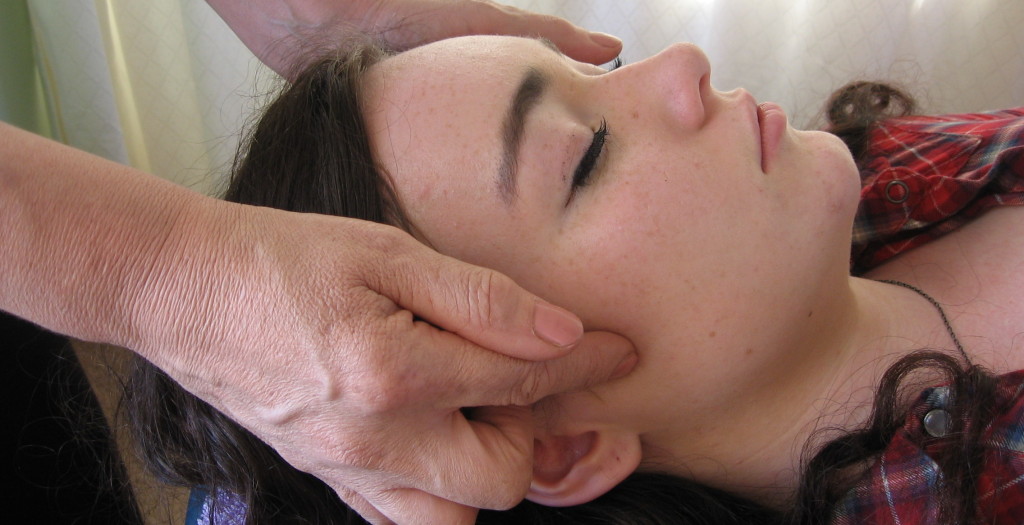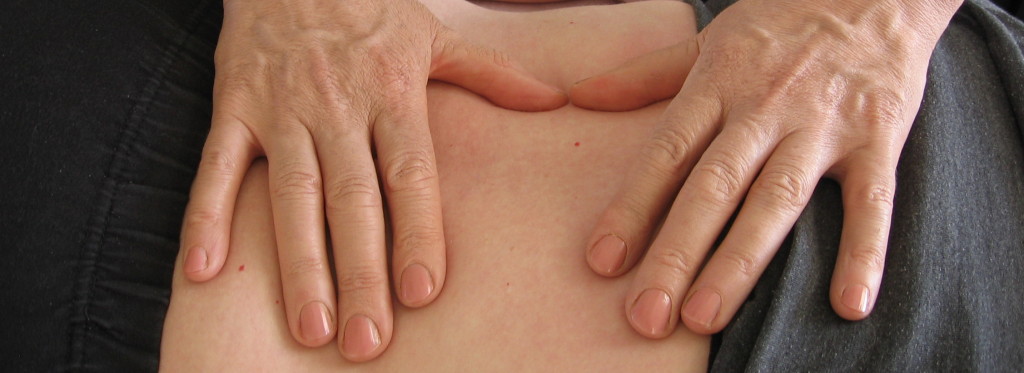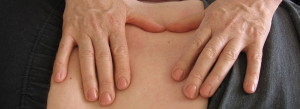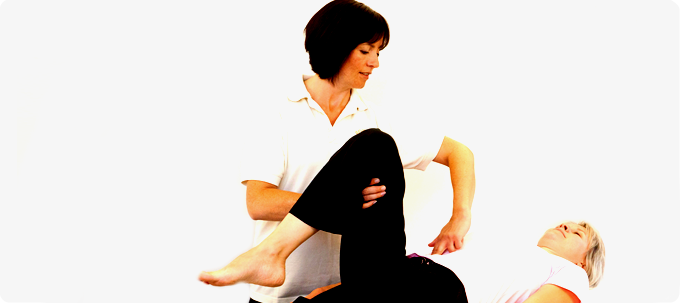Author's posts
Find Out More about the Bowen Technique
Click the button below to find out more about the Bowen Technique and how it works.
[maxbutton id=”1″]
How does it work?
There are many theories about the physiological means by which the Bowen technique brings about results. In addition to rebalancing the autonomic nervous system the technique may reset the body to heal itself by activating through the nervous system and the endocrine system among others, and the following mechanisms:
- Stretch Reflex:
Most moves are done either at the origin, insertion or belly of muscles where receptors are located. They inform the nervous system on the state of tension, length or stretch in the musculotendinous tissue. These receptors are stimulated during the ‘challenge’ and ‘rolling’ part of the Bowen move which then changes the stimulus received by the nervous system. This can result in changing a pain/muscle spasm loop.
- Fascia
Fascia is a specific type of connective tissue that forms a three dimensional web surrounding every tissue in the body. It is rich in a range of receptors that greatly influences the body’s neuro-muscular physiology in many and complex ways. Therefore fascia dysfunction can affect every structure, muscle, nerve and organ in the body.
Each Bowen move is done at the level of the superficial fascia and it thus affects the relationship between fascia and the nerve, muscle or tendon being mobilised. All of these are adversely affected when fascia stiffens, contracts or dehydrates.
- Joint Proprioceptors
All moves done around joints, muscles and tendons can directly affect the joint capsule and ligaments that are richly innervated with proprioceptors. This stimulus is received by the nervous system and in turn invites normalisation of the joint function helping to regain normal movement.
- Segmental viscerosomatic spinal reflexes
Many Bowen moves engage these spinal reflexes. They can produce referred reactions to the internal organs through stimulation of the skin, muscles and nerves.
- Acupuncture and meridian points
Many of the moves are carried out along acupuncture meridians or on specific points used in acupuncture which have been known to stimulate and balance the body’s energy levels.
- Harmonic vibration
The unique rolling action of the Bowen move over specific locations on the body can generate a vibrational pattern at specific frequencies. This can assist in rebalancing and tuning the body’s system thus promoting healing.
- Detoxification
Detoxification can be initiated during a Bowen session, thus improving the body’s ability to function at a cellular level.
- Lymphatics
Some Bowen moves may help activate draining of the lymphatic system. This may help to reduce congestion of the lymphatic system and improve the functioning of the immune system.
- Autonomic Nervous System
Tremendous stress can be inflicted on the body during times of physical trauma, poor posture and emotional conflicts. This can affect the autonomic nervous system (ANS) and is known to be responsible for stress reactions such as the ‘fight or flight’ response, which can reduce the ability of the body to rest, recover and recuperate. The Bowen Technique can balance the nervous system and as a result muscle tension decreases, hypersensitivity of the nerves is reduced, acute pain is relieved and healing is promoted.
FAQ’s
What happens during a Bowen session?
A case history will be taken at the beginning of your first appointment. A series of gentle movements will be carried out on the body. Through-out a session there are frequent but very essential pauses that allows the body time to respond and integrate the changes needed.
How long is a session?
A Bowen session usually takes between 45 and 60 minutes depending on the person’s health and the body’s response to it.
What will I feel during session?
Common experiences during a session are feelings of warmth or coolness, tingling, humming or buzzing, sensations of pain that subside quickly, changed emotions or a whole host of experiences. Also common is for a person to experience only a deep sense of relaxation.
Is Bowen therapy safe?
It is very gentle, relaxing and non-invasive involving no manipulation, and is therefore ideal for everyone including children and the elderly. It can assist recovery from many conditions from a traumatic injury to chronic illness, depending on a person’s ability to heal.
How many treatments will I need?
Usually the minimum recommended is 3-5 sessions. However up to 10 or more may be required in certain chronic conditions. The number needed is generally determined by the nature of the health issue, how long you have it and the state of your health. Bowen sessions can be repeated through-out the year for maintenance, to promote general well-being and for stress relief.
Will I have to undress for treatment?
No. The Bowen Technique can be done over bare skin or light clothing.
What should I wear?
Wear light comfortable clothing. Avoid wearing heavy denim or slippery fabrics such as silk or nylon.
What about medication?
It is important to let your therapist know what medication you are taking. As your health improves you may find that you may need less medication. It is important to consult your doctor before making any changes to your medication.
Can I mix Bowen therapy with other therapies?
It is best to allow each modality a period of 5 days before and after a treatment without interference from another. This gives the body an opportunity to integrate any changes.
Is Bowen safe for pregnancy and babies?
Yes. Bowen Therapy can be used safely through-out pregnancy and afterwards, helping with post-partum recovery. It can also help newborns to adjust to their new environment.
Is it painful?
The Bowen Technique uses very gentle pressure on the body. Occasionally there are some procedures that require deeper pressure but only to the comfort of the client.
Can I receive the Bowen Technique sitting down?
A Bowen treatment is mostly performed with the person lying on a massage table or bed. It can also be undertaken with the person sitting in a chair or standing up.
Conditions that have been known to respond to the Bowen Technique
- Conditions that have been known to respond to the Bowen Technique
This gentle and non-invasive method has successfully assisted a wide range of health problems. It has also been helpful in preventing many unnecessary surgical procedures. The Bowen Technique been found to achieve excellent results with a wide range of acute and chronic conditions. Conditions that can respond well include but are not limited to:
- Anxiety, Depression & Stress-related conditions
- Back pain, Sciatica & Spinal problems
- Digestive & Bowel problems
- Chronic Fatigue, ME, Fibromyalgia
- Sports Injuries
- Headaches, Migraines
- Hormonal Imbalances
- Post-operative recovery
- Respiratory conditions
- Gynaecological conditions (also infertility)
- Whiplash injuries
- Carpal Tunnel & Repetitive Strain Injuries
- Post-Dental trauma, temporo-mandibular joint problems, jaw disorders (e.g. clicking)
- Newborn baby problems (e.g. colic, feeding problems & sleep-related problems)
- Joint problems (e.g. Tennis elbow, frozen shoulder, ankle & knee problems)
The Bowen Technique
What is the Bowen Technique?
The Bowen technique consists of a rolling motion over muscles, tendons, ligaments, fascia and nerves. It is a series of precise, painless, and gentle moves which are applied over bare skin or light clothing, which can improve the energy flow in the body and aid in self-healing. A unique feature of the Bowen Technique is the frequent pauses between each set of moves. These are given to allow the body to respond to the moves and integrate the changes resulting by the moves.
The Bowen technique (often referred to as Bowen therapy) plays an important role in balancing energy levels in the body, releasing muscle and nervous tension and revitalising a congested lymphatic system which is often responsible for a variety of pain and inflammation in the body. This therapeutic and deeply relaxing technique can enhance wellbeing on all levels physically, mentally and emotionally. It is a unique, gentle and effective technique that can tap into the body’s own innate intelligence and its ability to heal itself.
History of Bowen
Tom Bowen (1916 – 1982) from Geelong, Australia began developing the Bowen Technique in the 1950s. He was fascinated by the different postures people had, and how this related to their symptoms of pain or ill-health. He became interested in ways to alleviate pain and began to notice that certain moves on the body had particular results. Over many years he developed his technique through the meticulous observation of his clients. Tom Bowen had the ability to identify compensation patterns which contributed to his outstanding success in treating a wide range of conditions. His philosophy of ‘less is more’ along with the observation that there is an innate ability for the body to heal itself was the foundation of his technique. He believed that often all that is needed is the smallest assistance possible for healing to take place. Tom Bowen discovered how to activate, release, switch on and reset the body’s own life force so that, if able to respond, the body will heal in its own time.
From its Australian origins Tom Bowen’s innovative and unique technique is now being taught and practiced worldwide.




